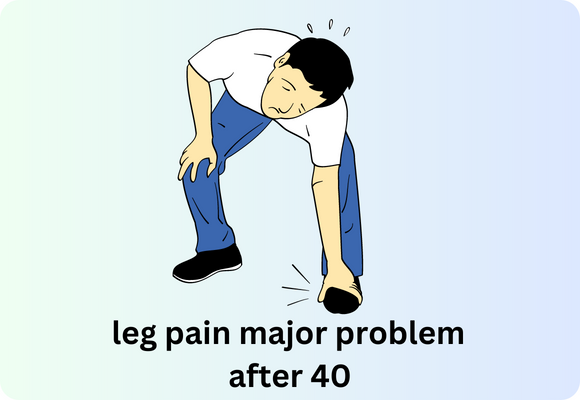Introduction
Say Goodbye to leg Pain in old age- As we age, our bodies undergo various changes, and one common issue that many older adults experience is leg pain. This discomfort can greatly impact an individual’s quality of life and hinder their mobility. In this article, we will explore the causes, symptoms, and management strategies for leg pain in old age.
- Understanding Leg Pain in Old Age
- Arthritis
- Peripheral Artery Disease (PAD)
- Deep Vein Thrombosis (DVT)
- Muscle Strains and Sprains
- Osteoporosis
- Symptoms of Leg Pain
- Diagnosing Leg Pain
- Physical Examination
- Medical History
- Diagnostic Tests
- Management and Treatment Options
- Lifestyle Changes
- Medications
- Physical Therapy
- Assistive Devices
- Surgical Interventions
- Prevention Strategies
- Home Remedies for Leg Pain
- When to Seek Medical Attention
- Conclusion
- FAQs (Frequently Asked Questions)
Table of Contents
Understanding Leg Pain in Old Age
Introduction
As we age, our bodies undergo various changes, and one common issue that many older adults experience is leg pain. This discomfort can greatly impact an individual’s quality of life and hinder their mobility. In this article, we will explore the causes, symptoms, and management strategies for leg pain in old age.
- Common Causes of Leg Pain
Arthritis
Arthritis, particularly osteoarthritis and rheumatoid arthritis, can lead to leg pain in older individuals. The gradual degeneration of joint cartilage and inflammation can cause stiffness, swelling, and pain in the legs.
Peripheral Artery Disease (PAD)
Peripheral artery disease occurs when there is a narrowing of the arteries that supply blood to the legs. This condition can result in leg pain, cramping, and fatigue, especially during physical activity.
Deep Vein Thrombosis (DVT)
Deep vein thrombosis, It can cause severe leg pain, swelling, and warmth in the affected area. DVT requires immediate medical attention as it can lead to life-threatening complications if the clot dislodges and travels to the lungs.
Muscle Strains and Sprains
Muscle strains and sprains can occur due to overexertion or sudden movements. These injuries can cause localized pain and limited mobility in the legs.
- Symptoms of Leg Pain
Leg pain can present itself in various ways, depending on the underlying cause. Some common symptoms include:
Aching or throbbing pain in the legs
Swelling or inflammation
Stiffness and limited range of motion
Weakness or instability
Numbness or tingling sensations
Redness or warmth in the affected area
It is essential to consult a healthcare professional for a proper diagnosis if you experience persistent or worsening leg pain.
- Diagnosing Leg Pain
When assessing leg pain in older adults, healthcare professionals may perform the following evaluations:
Physical Examination
A thorough physical examination helps identify any visible signs of injury, inflammation, or deformities in the legs. The doctor may also evaluate the range of motion and muscle strength.
Medical History
Obtaining a detailed medical history allows the healthcare provider to understand the individual’s overall health, previous injuries, and any underlying medical conditions that may contribute to leg pain.
Diagnostic Tests
Additional tests may be recommended to diagnose the specific cause of leg pain. These can include X-rays, MRI scans, ultrasounds, blood tests, or a Doppler study to assess blood flow.
- Management and Treatment Options
The management of leg pain in old age focuses on reducing pain, improving mobility, and addressing the underlying cause. The following treatment options may be recommended:
Lifestyle Changes
Regular exercise: Low-impact exercises such as walking, swimming, and cycling can help improve circulation and strengthen leg muscles.
Weight management: Maintaining a healthy weight reduces the strain on the legs and joints.
Balanced diet: Consuming a nutritious diet rich in vitamins and minerals supports bone and muscle health.
Medications
Pain relievers: Over-the-counter or prescription medications may be recommended to alleviate pain and reduce inflammation.
Topical creams: Creams or ointments containing analgesic or anti-inflammatory agents can provide localized relief.
Physical Therapy
Physical therapy exercises and techniques can help improve flexibility, strength, and range of motion in the legs. A trained therapist can develop a personalized plan to address specific needs.
Assistive Devices
Using assistive devices such as canes, walkers, or orthopedic shoes can provide support and stability, reducing the strain on the legs while walking or standing.
Surgical Interventions
In severe cases where conservative treatments are not effective, surgical interventions may be considered. These can include joint replacement surgery or procedures to address specific conditions like PAD or DVT.
- Prevention Strategies
Taking proactive measures to prevent leg pain is essential for older adults. Here are some preventive strategies:
Regular exercise and stretching to maintain muscle strength and flexibility.
Wearing appropriate footwear that provides proper support and cushioning.
Avoiding prolonged periods of sitting or standing and taking breaks to move around.
Managing underlying health conditions effectively, such as diabetes or high blood pressure.
- Home Remedies for Leg Pain
In addition to medical interventions, some home remedies can help alleviate leg pain:
Applying hot or cold packs to the affected area.
Elevating the legs to reduce swelling and improve circulation.
Gentle massage using essential oils or over-the-counter creams.
Practicing relaxation techniques like yoga or meditation to reduce stress and muscle tension.
- When to Seek Medical Attention
While mild leg pain can often be managed at home, certain situations warrant prompt medical attention. Seek medical help if you experience:
Sudden, severe leg pain with no apparent cause.
Signs of infection, such as redness, warmth, or pus.
Difficulty walking or bearing weight on the leg.
Numbness or tingling that persists or worsens.
Swelling accompanied by shortness of breath or chest pain.
Conclusion
Leg pain in old age can significantly impact an individual’s daily life and mobility. By understanding the common causes, symptoms, and treatment options, individuals can take steps to manage and prevent leg pain effectively. It is essential to consult with healthcare professionals for accurate diagnosis and personalized treatment plans.



